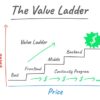Email Marketing
Steps For Starting Your First Business As An Entrepreneur
Thinking of Starting a Business? Here’s a 10-Step Guide to Getting Started
Starting a business can feel overwhelming, especially if you’re stuck in “planning mode.” Many aspiring entrepreneurs spend so much time researching that they delay taking real action. To make it easier, here’s a ten-step process that cuts through the noise and gets you moving toward your goal.
1. Handle Legal Basics
Make sure your business is legally compliant. For U.S. entrepreneurs, check the U.S. Small Business Administration and IRS websites for guidance, and consider hiring a lawyer or accountant if your budget allows. If you plan to sell internationally, make sure to comply with regulations in those regions, such as Europe’s GDPR.
2. Limit Your Risk
Don’t fall for the myth that entrepreneurship requires high-stakes risks. Start small, ideally as a side hustle, while keeping your job. Build up savings so you have a safety net before going full-time.
3. Use What You Have
Focus on your current resources—skills, time, connections, or savings. Don’t stress over what you lack; think of creative ways to leverage what’s already in your toolbox.
4. Pick a Business Model
Choose a model that aligns with your resources and goals. Here are some options:
- Services: Low cost, fast cash flow, but not easily scalable.
- Coaching/Consulting: Low startup cost, ideal for those with credibility.
- Info Products: Easy to scale and cost-effective, great for subject-matter experts.
- SaaS: Suitable for tech-savvy entrepreneurs but may take longer to launch.
- Ecommerce: Manageable if you start with dropshipping, though it’s highly competitive.
5. Identify Your Target Audience
Choose a demographic that has a problem you can solve, can afford your solution, and is willing to pay. This will directly impact your earning potential.
6. Start with One Core Product or Service
Don’t complicate things with multiple offerings. Choose one core product or service that solves a primary problem for your target customers.
7. Make an Irresistible Offer
An irresistible offer has three elements:
- High value: Add extras to make your offer more appealing.
- Low price: Price it competitively for the value.
- Low risk: Offer a money-back guarantee if possible.
Example: If you sell a product, consider bundling it with a free guide or trial, which can significantly increase its perceived value.
8. Add Upsells and Cross-Sells
Upsells are upgraded offers, while cross-sells are complementary products. Both can increase the lifetime value of a customer and improve your profits. Think of McDonald’s “Would you like fries with that?”—these add-ons matter!
9. Build a Simple Sales Funnel
A sales funnel is a system for converting visitors into leads, then customers. Start with a lead magnet, like a freebie, to get their email address. Guide leads through a series of offers, upsells, and cross-sells to maximize conversions.
10. Drive Traffic to Your Funnel
Use one or more of these marketing strategies to bring people to your funnel:
- Social Media: Build a profile, link to your offer, and post consistently.
- Video Marketing: Start a YouTube channel or create short-form videos on TikTok.
- Paid Ads: Start with small-budget Facebook ads, then optimize for better results.
If your budget allows, combining all three strategies can be powerful. Otherwise, stick with social media and video marketing to build your audience over time.
Bonus: Learn to Build Sales Funnels That Work
Want a deeper dive into building effective sales funnels? Russell Brunson’s book DotCom Secrets is a great place to start. With 2,500+ ratings on Amazon and a 4.7-star rating, it’s a comprehensive guide to creating funnels that convert. It’s even available for free on his website if you cover shipping!
Starting a business is all about taking action. Follow these ten steps, and you’ll be well on your way to launching a successful venture!
>>>Join The One Funnel Away Challenge<<<






























